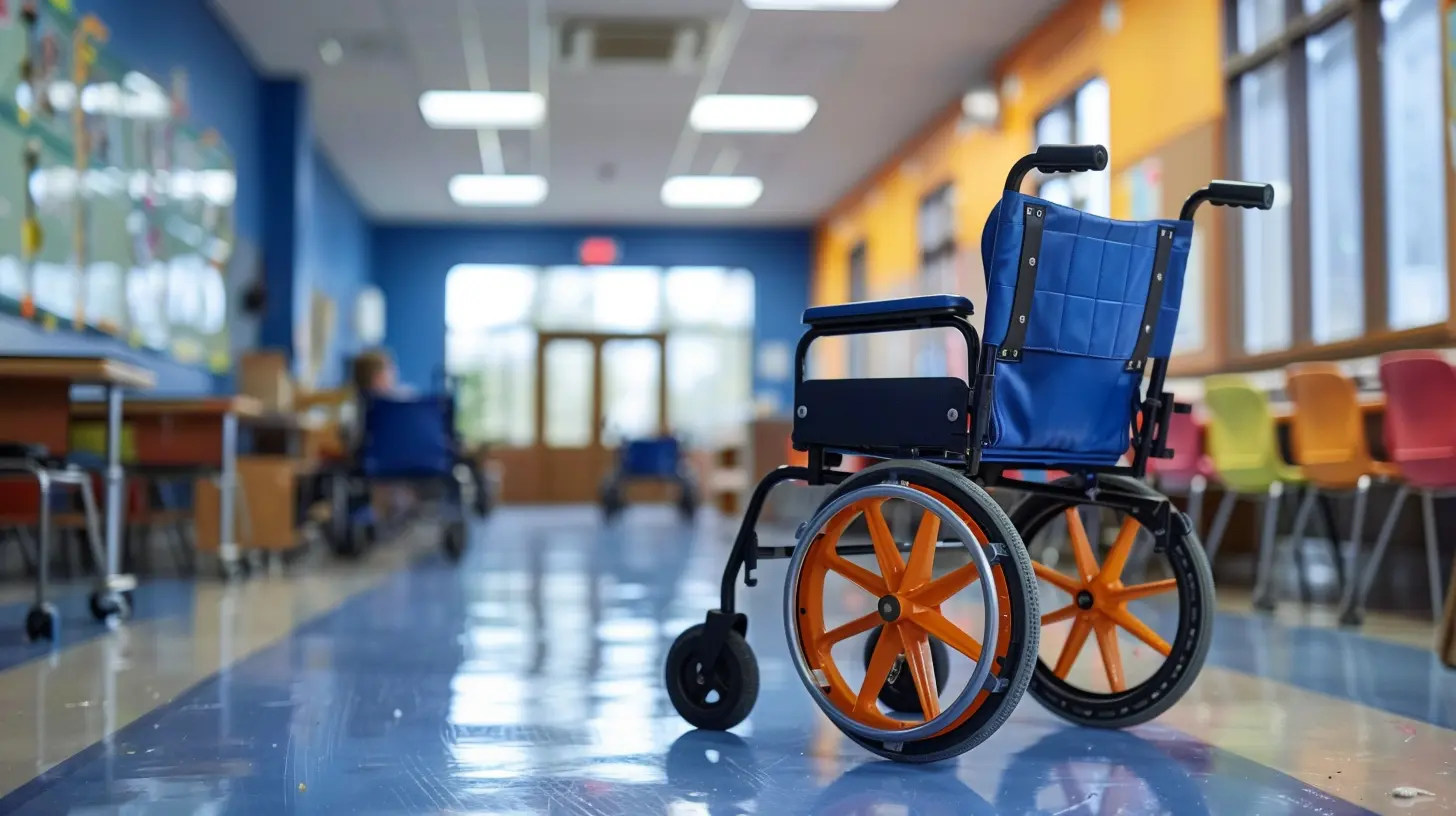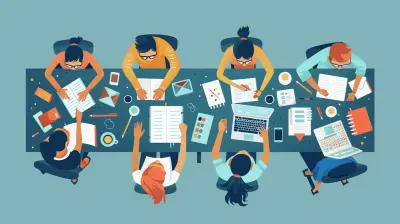The Role of Assistive Technology in Supporting Students with Learning Disabilities
17 October 2025
When we think about education, we often imagine a level playing field where every student has the same opportunities to learn and succeed. But let’s be real for a second—education isn't one-size-fits-all. For students with learning disabilities, the playing field can often feel more like a mountain they have to climb, compared to their peers. However, thanks to assistive technology, that mountain is starting to look more like a hill, and in some cases, it’s practically flat.
Assistive technology (AT) is a game-changer for students with learning disabilities. Whether it's helping them read, write, or communicate, AT tools provide the support they need to thrive in and out of the classroom. But how exactly does assistive technology step in to help? How does it break down those barriers and set students up for success? Let’s dive into the details.

What Is Assistive Technology?
Before we get too deep, let's break down what we mean by "assistive technology." AT refers to any device, software, or equipment that helps people work around their challenges—whether physical, cognitive, or sensory. For students with learning disabilities, assistive technology is the bridge between their unique learning needs and the educational content they’re expected to master.Think of it as a toolbox filled with different gadgets designed to make learning more accessible. Just as a hammer helps a carpenter build a house, assistive technology helps students build their knowledge and skills.
Types of Learning Disabilities
To understand how assistive technology really makes a difference, we first need to know a bit about the types of learning disabilities students might face. Here are the most common:- Dyslexia: Affects reading abilities.
- Dysgraphia: Impacts writing skills.
- Dyscalculia: Makes math-related tasks particularly difficult.
- Auditory Processing Disorder: Affects the ability to process what’s heard.
- Attention Deficit Hyperactivity Disorder (ADHD): Impacts focus and attention.
Each of these learning disabilities can create unique challenges in a classroom setting. But with the right assistive tools, those challenges can be mitigated or even overcome.

How Assistive Technology Supports Students with Learning Disabilities
Now, let’s get into how assistive technology can directly support students with learning disabilities. It’s not just about giving them an edge—it’s about leveling the playing field.1. Improving Reading Skills
For students with dyslexia or other reading challenges, reading can feel like trying to navigate a foreign language. Words can seem jumbled, letters might appear out of order, and the process can be downright exhausting. But this is where assistive technology steps in like a trusty guide.Text-to-Speech (TTS) Software
One of the most popular tools for students with reading difficulties is text-to-speech (TTS) software. This software reads digital text out loud, allowing students to hear the words instead of struggling to decode them on the page. TTS tools allow students to follow along with the text while listening, which can improve comprehension and retention.Imagine you’re trying to read Shakespeare in its original form—it's tough! But if someone were to read it to you, explaining the tricky parts along the way, suddenly it becomes much easier to understand. That’s exactly what TTS does for students with reading disabilities.
Audiobooks and Digital Readers
In addition to TTS, audiobooks and digital readers are also fantastic tools. Audiobooks allow students to listen to literature at their grade level without getting bogged down by the act of reading itself. Digital readers often come with customizable features, like changing font size or background color, which can reduce eye strain and make reading more accessible.2. Enhancing Writing Capabilities
Writing can be a significant challenge for students with learning disabilities, especially those with dysgraphia or other fine motor skill issues. This is where technology can step in to make writing not only possible but enjoyable.Speech-to-Text (STT) Software
Ever tried to type out a long message on your phone, but got frustrated halfway through and just used the voice-to-text feature? That’s speech-to-text (STT) software in action! For students with dysgraphia, it can be a lifesaver. Instead of struggling to write or type, they can speak their thoughts, and the software transcribes their words onto the screen.It’s like having a personal scribe who understands every word you say, no matter how fast or slow you speak. This allows students to focus on their ideas without getting bogged down by the mechanics of writing.
Word Prediction Software
Another writing tool is word prediction software. As students type, the software predicts what word they’re trying to write, offering suggestions to complete it. This reduces the cognitive load of spelling and allows students to concentrate on the content of their writing. It’s like having a friend who finishes your sentences—but only when you want them to!3. Boosting Math Skills
Math can feel like an impossible puzzle for students with dyscalculia or other math-related learning disabilities. Numbers might not make sense, equations can seem like gibberish, and frustration builds up quickly. But just like with reading and writing, assistive technology has solutions.Calculators and Math Software
While it may sound simple, calculators are a powerful assistive tool. For students who struggle with basic arithmetic, calculators can help them keep up with more complex math problems without getting bogged down by simple calculations.On the more advanced side, there’s math software like MathTalk or GeoGebra, which can help students visualize complex math problems and work through equations step by step. These tools provide a hands-on approach to learning math, turning abstract concepts into something tangible and easier to understand.
Visual Learning Tools
Some students learn best when they can see things in action, especially when it comes to math. Visual learning tools, like digital manipulatives and interactive whiteboards, allow students to engage with math in a more dynamic way. These tools often present math problems as puzzles or games, making the learning process feel less like a chore and more like fun.4. Improving Focus and Organization
For students with ADHD, staying focused and organized can be incredibly challenging. Luckily, assistive technology offers a range of tools to help students stay on task and keep their work organized.Time Management Tools
Time management tools, like visual timers or scheduling apps, help students break down their tasks into manageable chunks. These tools provide visual or auditory reminders to keep students on track, making it easier to manage their time and avoid getting overwhelmed.Mind Mapping Software
Another excellent tool for students with ADHD or other organizational challenges is mind mapping software. This software helps students organize their thoughts and ideas visually, making it easier to plan essays, projects, or even daily tasks. It’s like having a digital whiteboard where you can pin all your ideas and see the connections between them.
The Benefits of Using Assistive Technology in the Classroom
So, what’s the big deal? Why should schools invest in assistive technology for students with learning disabilities? The benefits are numerous and far-reaching.1. Increased Independence
One of the biggest advantages of assistive technology is that it empowers students to work independently. Instead of relying on a teacher or aide for constant support, students can use their AT tools to complete tasks on their own. This builds confidence and fosters a sense of independence that will serve them well beyond the classroom.2. Personalized Learning
Every student learns differently, and assistive technology allows for a more personalized approach. By offering tools that cater to each student’s unique needs, schools can create a more inclusive learning environment where every student has the chance to succeed.3. Reduced Anxiety
For many students with learning disabilities, the pressure to "keep up" with their peers can cause significant anxiety. Assistive technology levels the playing field, reducing frustration and anxiety by giving students the tools they need to engage with the material in a way that works for them.4. Improved Academic Performance
When students have the right tools, they can focus on what really matters—learning. Assistive technology helps students overcome the barriers posed by their disabilities, leading to improved academic performance and a greater sense of accomplishment.
Challenges and Considerations
While assistive technology offers many benefits, it’s not without its challenges. Not all schools have the budget to invest in the latest technology, and some teachers may be unfamiliar with how to integrate these tools into their classrooms effectively. Additionally, not every student will immediately take to using assistive technology—there’s often a learning curve involved.However, with proper training, support, and commitment, these challenges can be overcome. The key is ensuring that both teachers and students receive the guidance they need to make the most of assistive technology.
Conclusion: A Brighter Future with Assistive Technology
At the end of the day, assistive technology is more than just a set of fancy tools—it’s a lifeline for students with learning disabilities. It helps them break down barriers, build confidence, and succeed in ways that might have seemed impossible before.The role of assistive technology in supporting students with learning disabilities is clear: it’s a powerful tool for creating a more inclusive, equitable education system. And as technology continues to evolve, we can only expect that it will play an even bigger role in the future of education.
all images in this post were generated using AI tools
Category:
Learning DisabilitiesAuthor:

Bethany Hudson
Discussion
rate this article
1 comments
Sonya McDermott
Empower every learner—technology is non-negotiable!
October 26, 2025 at 4:04 AM


